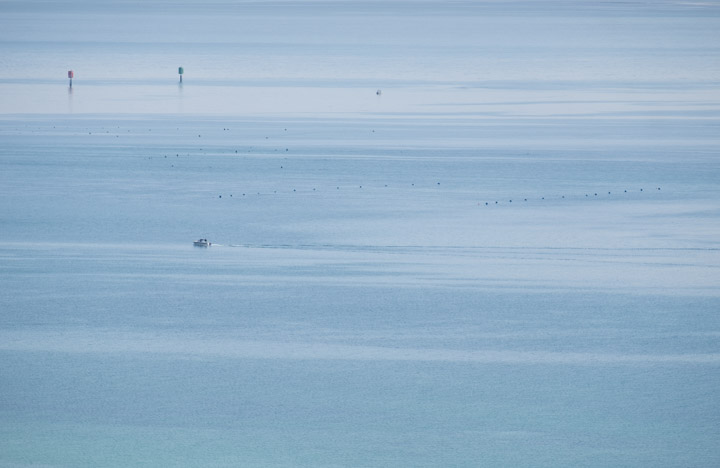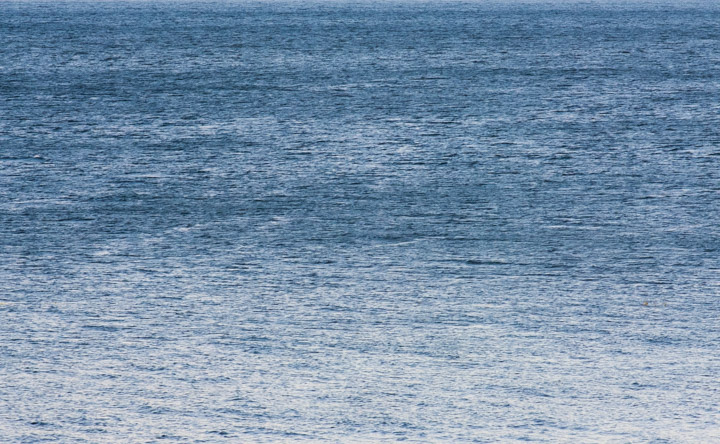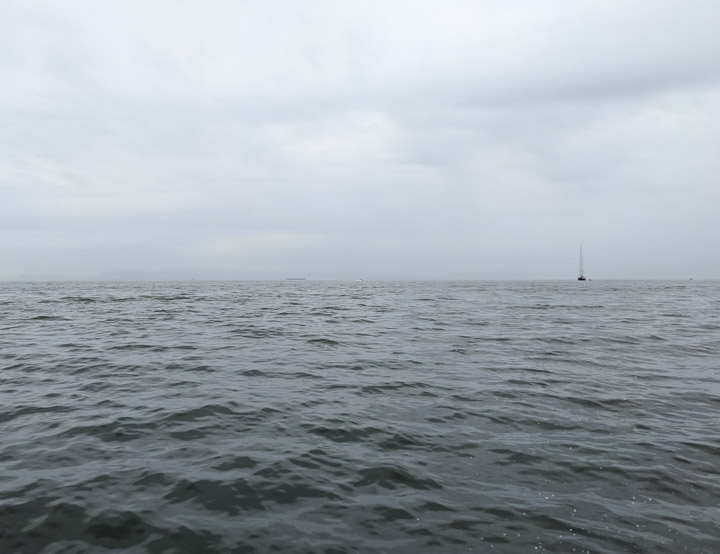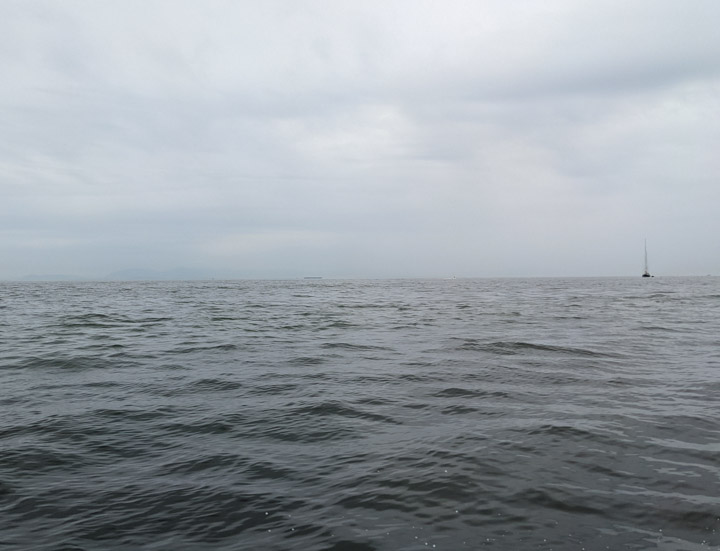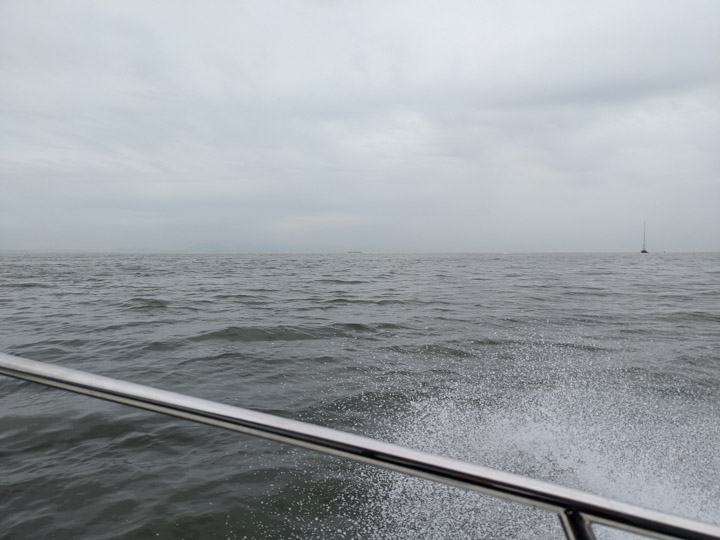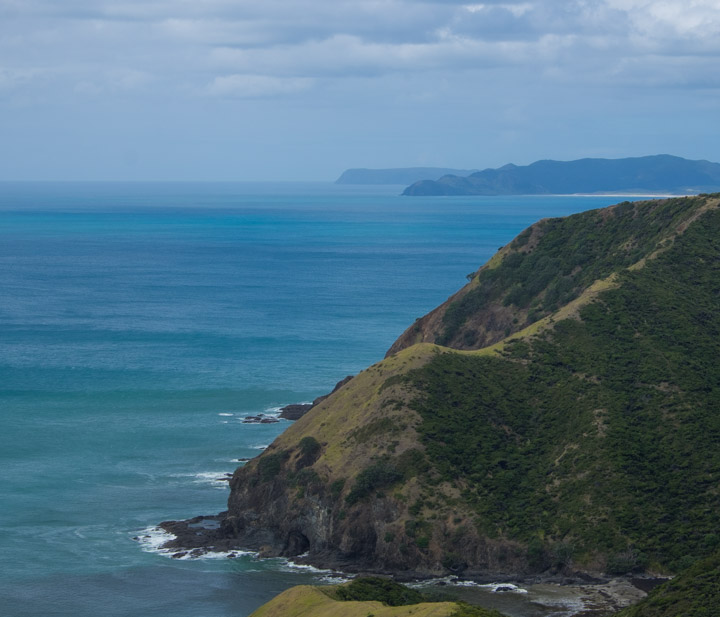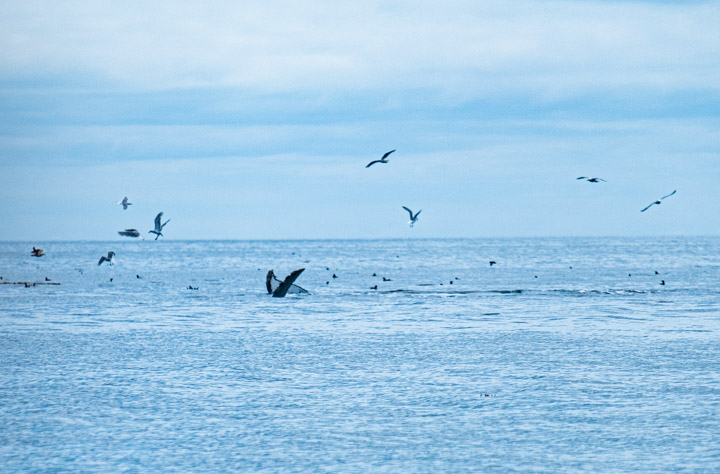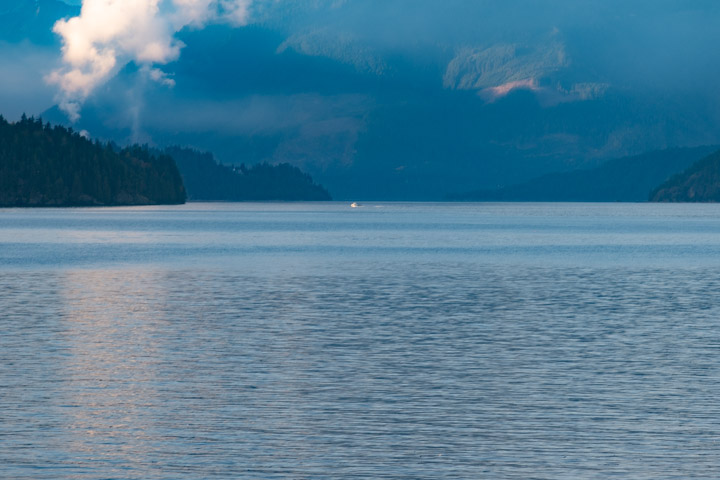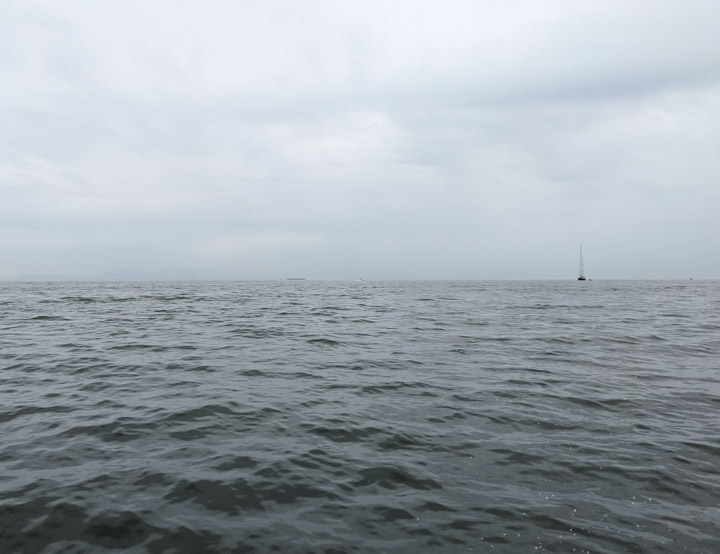
I have the good fortune to live in a seafront city, the further fortune to travel often by boat to a cabin by ocean’s edge, and still further, to work in a boat/office, many hours a week within arm’s reach of salt water. The water exhibits mysteries and tells me things I don’t understand but would love, given another lifetime, to study.
The sea’s surface is never uniform, always patterned. I assume the patterns reflect the effects of wind and tide, but not how, nor what message they’re trying to send. I’m pretty sure that the motorboats that crisscross the open water leave long-lasting traces on the surface patterns. I’d like to know.
· · ·
You can feel, not just see, the surface textures. At any noticeable speed the boat’s progress is unsmooth. But the the flavors of roughness are infinite, combining aspects of chop, sway, hill-climbing, surfing, and blunt impact. When you cross one of those visual borders on the surface the quality of ride changes too. Sometimes looking ahead I can even predict correctly, finding smoother water when it’s uncomfortably rough. But I don’t know how the waves get that way, nor what variables underlie the endless variety of different wave patterns. I’d like to know.
· · ·
· · ·
A bit of a rough ride in the Queen Charlotte Channel. Notice how the water changes between the first two pictures, shot literally five seconds apart. Evidence of roughness in the third.
Boating in the Pacific Northwest is pleasant in that the topography is mostly fjord-based, which means there aren’t many rocks near enough the surface to trouble your boat. So the major risk is floating logs, which usually won’t sink you but can wreck your propeller in a moment, leaving you calling for an expensive tow. We try to always have two pairs of eyes watching forward. When you spot a log in your path, first you dodge. Then you slow down, because where you see one, you’ll usually encounter more; the flotsam floats in clusters. I’ve never managed to spot any pattern in where the clusters occur, or how they correlate with the time of day or time of year. I’d like to know.
The color of the ocean is never constant, day to day nor hour to hour. The direction of the sun matters I guess, and the nature of the cloud cover. Also perhaps the salinity of the water, and whatever microorganisms are flourishing where you’re looking. Perhaps there are things to be learned from the color about the ecosystem or the weather? I’d like to know.
Looking east from Cape Reinga across the north tip of New Zealand.
Sometimes the water’s surface is clean, especially out away from land. Where my office floats, rarely. Varieties of crud accumulate, some identifiable — pollen, for example, which correlates with hay-fever. But sometimes the surface is oily or slimy or bubbly. This is an urban inlet, so likely the city’s effluents play a role here. I bet a biochemist with a decent lab could figure out what it is, most times. I’d like to know.
And the crud isn’t just on the surface. There are days when I can see a few meters deep, getting a clear view of the crabs that somehow manage to make a go of it in this Vancouver-flavored soup. Other days it might as well be a grey-green wall. Sometimes you can see what’s clouding the water because it’s granular, and the grain size varies. Basic combinatorics teaches that you don’t need that many contributing factors to get this variety of looks, but I don’t know what those factors are. I assume there are Marine Biologists who study this stuff and could tell you at a glance what’s going on. I’d like to know.
More than crabs live in False Creek and out in the broader Pacific. On warm summer days by the office, huge schools of tiny fish swarm the water. Their motions, were they starlings, would be called murmuration. An old guy washing his boat told they were herrings. Sometimes, below them, larger silver fish cruise about, all very flOw-like. How do they arrange to move in waves, all together, lightning-fast? When the water is jammed with life on Tuesday and Thursday, where were they all on Wednesday when it was almost empty? What do they eat? How does the species make it from one summer to the next? I’d like to know.
Humpbacks and gulls chowing down in Haida Gwaii.
At a larger scale, we’ve started seeing humpbacks, lots of seals have always been around, also the occasional killer whale or dolphin pod. At sea, you don’t see the salmon, but we know they’re there in large but sadly diminished numbers. The marine biologists I’ve known shake their heads at how little we know about the subsurface lives of all these creatures, but there’s joy for a scientist in a large unexplored space. What are they doing down there where we can’t see them? I’d like to know.
Everyone knows the circular ripples caused by raindrops or pebbles. When there’s just a drizzle or perhaps a storm stealing in, there’s fascination in watching the raincircles crowd denser and denser. But lots of times, just strolling along the dock, a circle or circle cluster will manifest, looking smaller than those caused by raindrops. I’m assuming that it’s something from below, touching the surface for its own reasons, whatever they are. I’d like to know.
Also · Humanity is like the ocean. Its surface is patterned and you can feel the patterns as you pass through. Colors matter. There is transparency and occlusion. There is nasty crud, often in clusters. Important things live beneath the surface. Impacts arrive from above and below and it’s not obvious what caused them. I’d like to understand all that better too.
如有侵权请联系:admin#unsafe.sh
